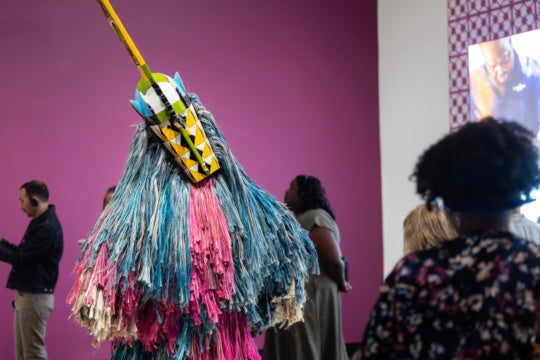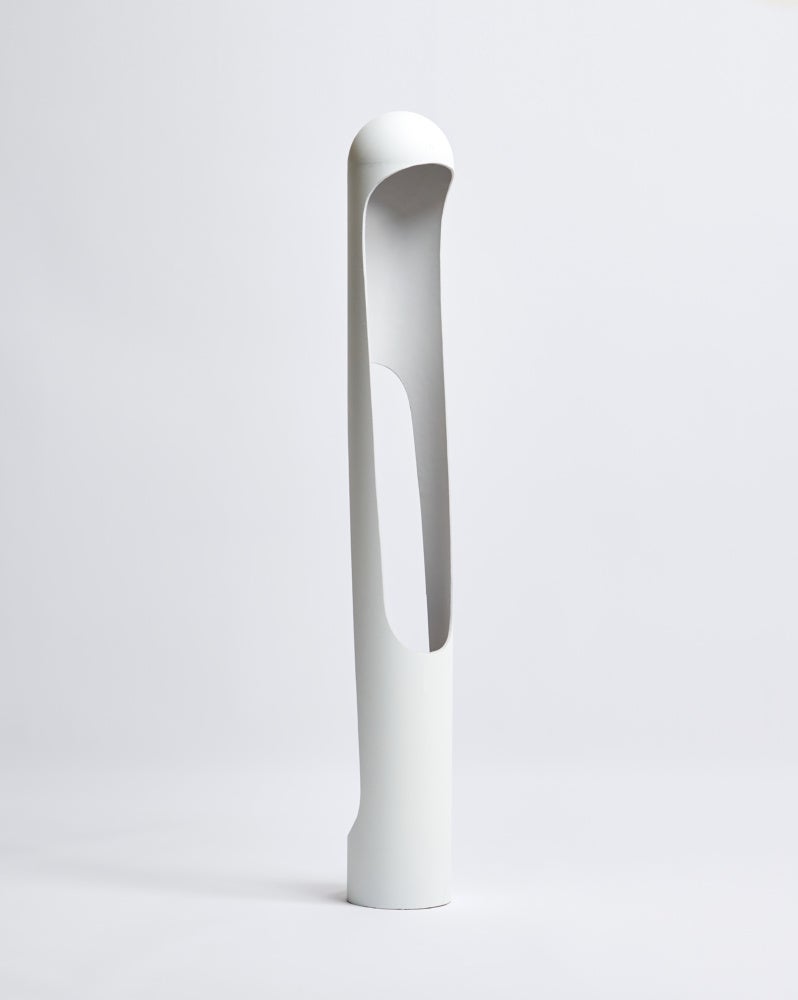
Kiah Celeste’s sculptures are curiously serene. Influenced by artists including post-minimalist Eva Hesse and surrealist Louise Bourgeois, Celeste models discarded synthetic materials toward new forms, and in doing so builds psychological intensity. Glass, fabric, mortar, plastics, and concrete contribute to the uncanny nature of each exquisite object; their various designs––delicate seams, gentle ripples, confident lines––entice and puzzle. Some mimic organic forms, others industrial architectures. Precision, tension, pressure, and balance appear again and again.
Since 2018, Celeste has lived and worked in Louisville, Kentucky—a generous environment for her practice both spatially and temporally. She spoke to Burnaway about craftsmanship, pushing materiality, and maintaining balance within her work.
This interview was originally published in print for the Atlanta Art Fair 2024 broadsheet publication, taking place from October 3 to 6, 2024.
Maria Owen: You’re currently based in Louisville, Kentucky. How has life there––materially, ideologically, or otherwise––informed your practice?
Kiah Celeste: Moving to Kentucky was an eye-opener for me as a born-and-raised Brooklyn girl. I moved to Louisville when I was twenty-three to get a sense of what the rest of the U.S. was like outside of the New York City bubble, as well as to give myself a chance to focus on my work without any distractions and keep my cost of living down.
Giving myself this freedom to focus fully on my work has been one of the smartest and most beneficial moves for my career. I gave myself the nutrient soil, sunlight, and water I needed for my work to grow exponentially in the last six years, and when I start missing the level of stimulation I’m used to, I am able to travel.
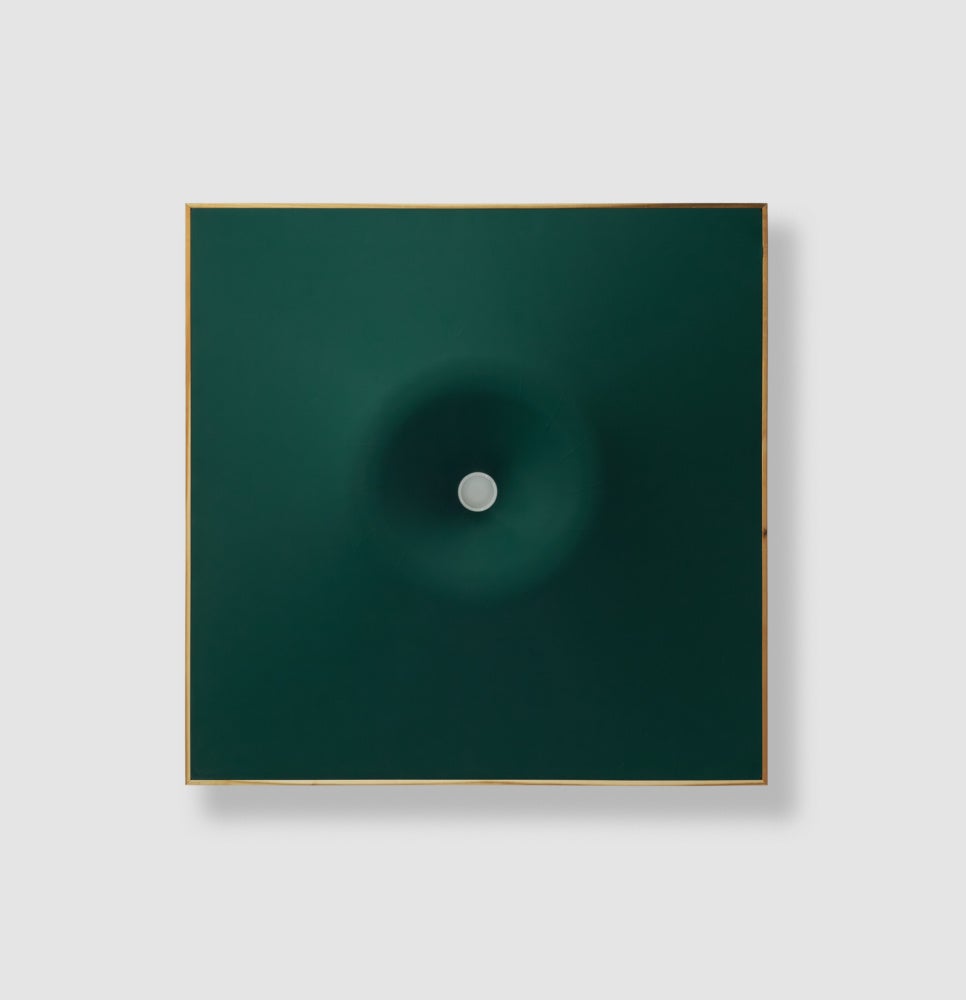
I never thought I’d be a “country girl” but here I am in my house harvesting from my garden, mingling with spiders and bees, feeding the birds, driving a pickup truck, and going to the neighborhood bar. It’s an experience I’ll always be grateful for, even though I know it’s not forever.
MO: What are you currently in the process of making? What are the challenges and the discoveries?
KC: Besides inaugurating natural elements in the works, I have begun building my own frames, stretching colored fabric onto them and incorporating objects which stretch the fabric in various ways. It’s a clean and satisfying new aspect of my practice—using proper techniques and tediousness as opposed to my usual, more immediate sculptural work. Although they are framed wall works, they still use found objects in ways that are in conversation with my familiar approach of using the inherent capabilities of the material.
MO: How important is formality and craftsmanship in your work?
KC: I believe it’s important to do anything and everything with intention and without cutting corners. That sounds a little hypocritical coming from someone who often avoids using hardware and measurements when building a sculpture, but in my defense, I have committed to methodologically using balance and intuition as tools to replace those formal technicalities. On the other hand, when I am doing more skill-based work, like building frames or using tools and hardware, I do it as properly and skillfully as I know how. I enjoy learning how to do things well, and there is a beautiful dignity in honing a craft.
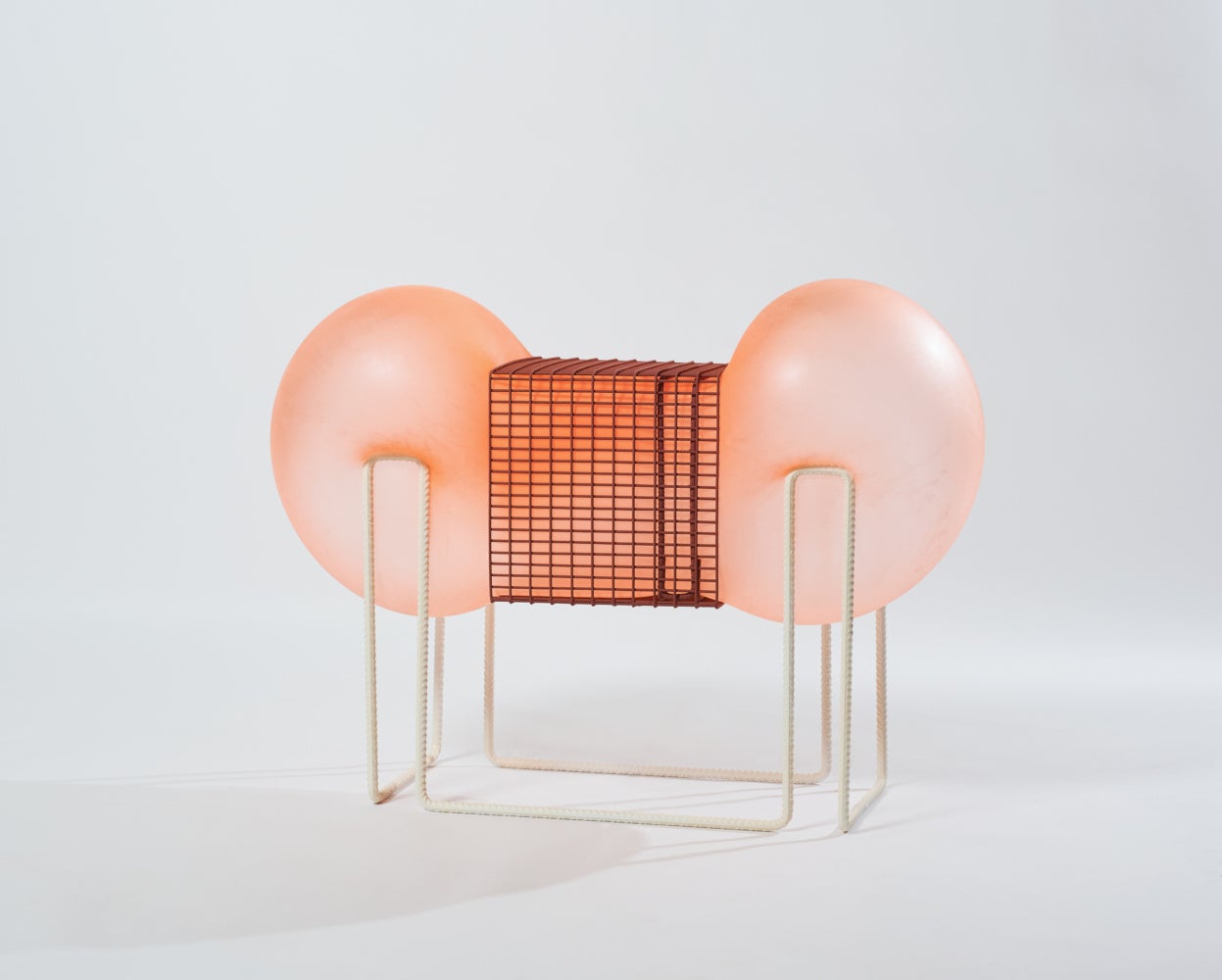
MO: In the past, you focused on using synthetic materials, like fluorescent lights, mechanical parts, and vinyl. More recently, you invited in natural elements. How do you mediate between the synthetic and the natural? How do you understand that relationship?
KC: Balance has always been a central theme of my work in many senses––tangibly, physically, and figuratively. The balance of materiality has taken shape by my using disparate recycled synthetic objects: soft and hard, household and industrial, heavy and light, rigid and squishy, etc.
I’m introducing organic materials in a similar capacity. I have begun exploring the uses of organic matter in new ways, so far with animal caul fat (a thin, fatty connective tissue), wool, leaves, latex (which is a processed natural material, a balance not lost on me), and branches. I combine them with nonorganic materials that seem at odds with each other. A dialogue about nature vs. industry in society will inevitably come up when introducing these relationships in a public view––an idea I’ll greet, but let roam around on its own.
As always, whether using natural or synthetic materials, sustainability and environmentally friendly sourcing is my priority. One interesting difference I’ve noticed while sourcing organic material vs. synthetic/industrial––though it may seem obvious––is the large disparity between the notable stinginess of humans giving away discarded synthetic material, while nature gives itself away freely and abundantly. It is so easy to take advantage of nature (and humankind most definitely has), but I am intent on using leftover organic material so as to not disrupt the natural order.
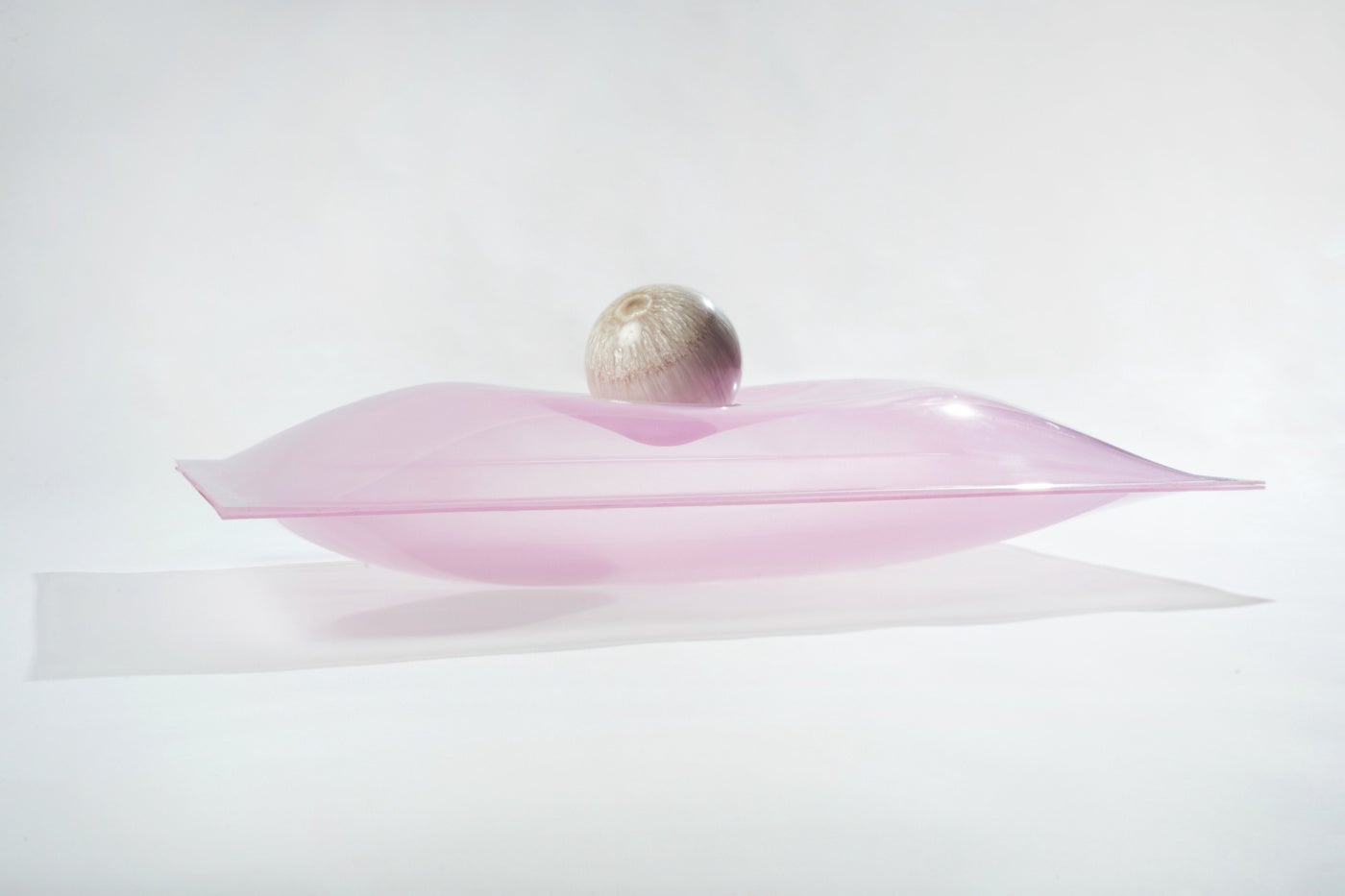
MO: Dream of Pearl (2023) was exhibited as part of your solo presentation in Miami last December. How did this piece come to be, from ideation to creation to exhibition?
KC: I found a skylight dome on one of the abandoned floors of my studio building. I was attracted to it for its rounded, pillowy shape, and I had the urge to press things into it, the way you would rest your head on a pillow; all I had to do was figure out how to mold the plastic. I first used a propane torch to heat up the center of the dome––to no avail. I needed the entirety of the plastic to be at a moldable temperature. I needed an oven.
Production was stalled until I found more skylight domes. I tracked down a slew of polycarbonate and acrylic ones from the aftermath of a roofer’s demo job, and I drove down to Tennessee to pick them up. A lot of my practice is spent looking for the right materials, which can sometimes take a frustrating amount of time.
My partner and I came up with a design for a large-enough oven consisting of an infrared heater and a box made of insulated panels. When enclosed, the oven could go up to 300 degrees. It took us days of experimentation until we found the correct molding temperature and method of molding. After molding an adequate polycarbonate dome (a smoky brown color), the image of a complete Dream of Pearl emerged in my mind’s eye: two acrylic skylight domes, sandwiched together and painted a soft translucent pink, with a pearly white bowling ball resting in the center. It felt surreal and dreamy; these hyper-functional materials turning into something fantastical.
In a rare turn of events, the completed work came out almost identical to how I’d imagined it. My partner, a photographer, documented both pieces and then out they went to the real world. There is a palpable magic when the physical manifestation of a piece comes out naturally and identically to the initial conception. The creator feels it, and the viewer absorbs that sensation as well. I think that is one reason this piece was particularly successful for me, and gets such a positive reaction.
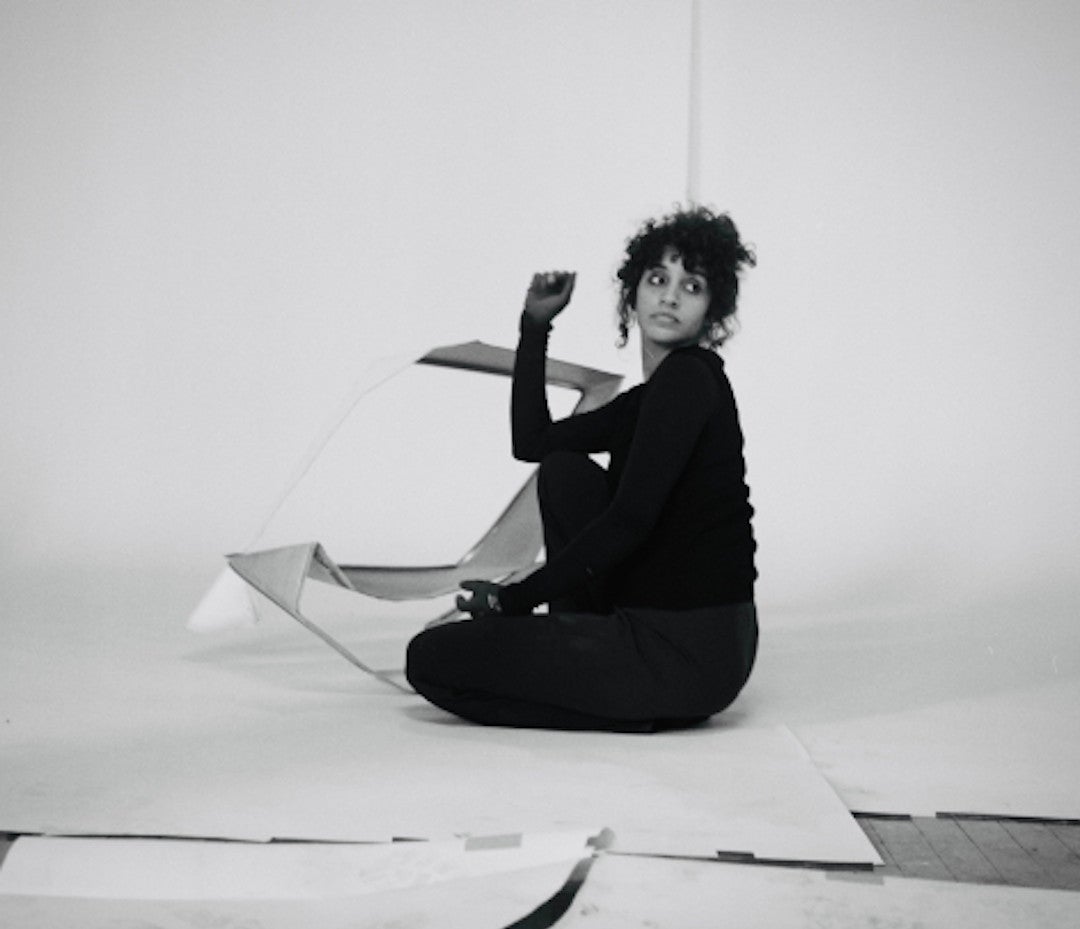
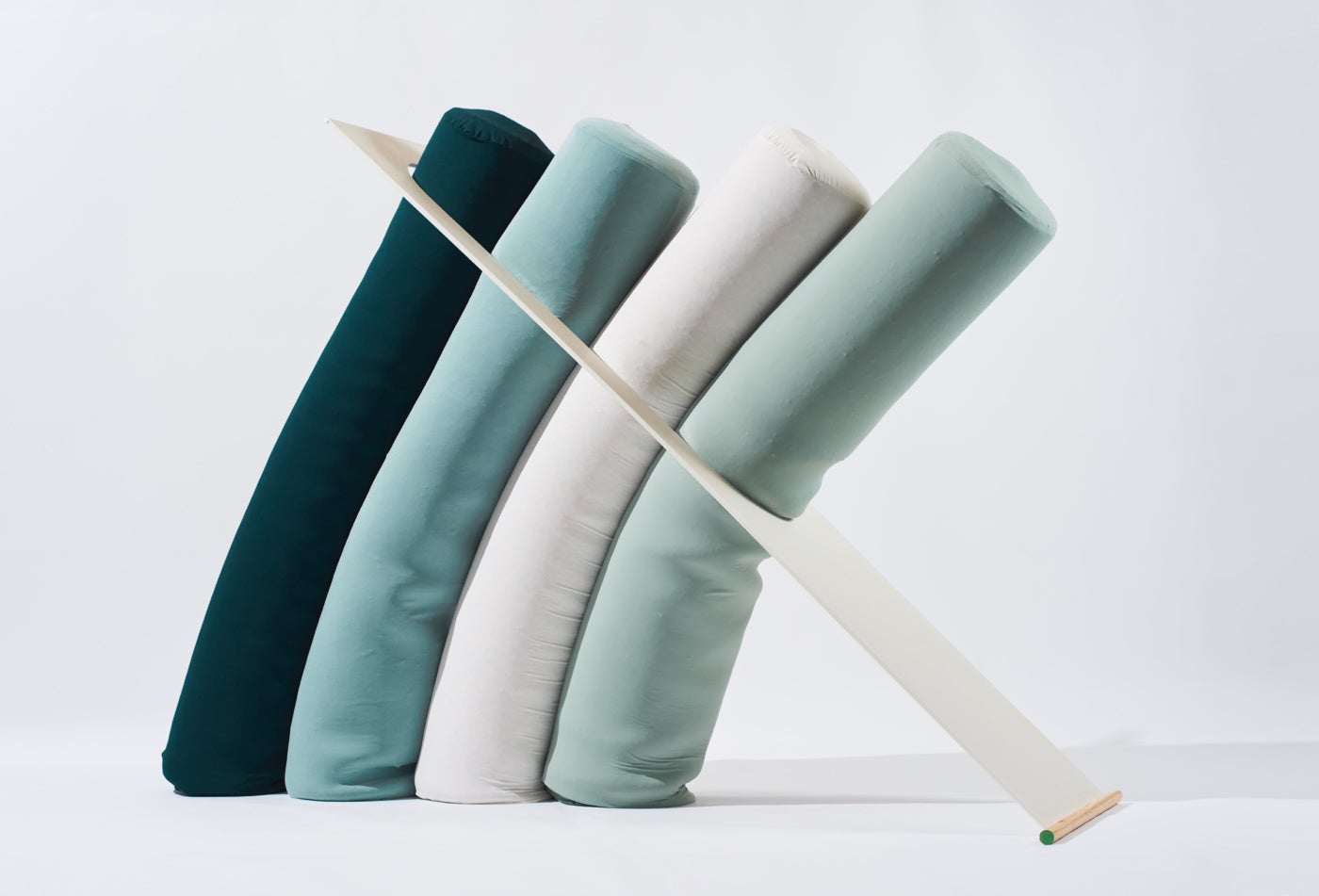
Kiah Celeste will exhibit in a group presentation at the Mary M. Torggler Fine Arts Center in Virginia this fall. Her second solo exhibition will open at Swivel Gallery in New York in the spring of 2025.



